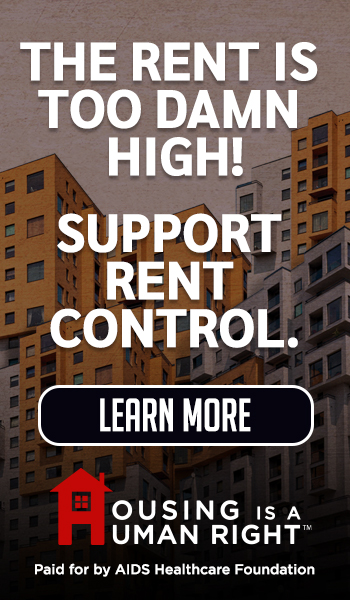Comments
THE HOMELESS PROBLEM -
“People who are homeless are not social inadequates.
They are people without homes."
--Sheila McKechnie
Each day the homelessness scene is worsening, acquiring a bleak permanence. In Los Angeles County, one in 150 residents, or 69,000 people, experience homelessness. Good intentions, legislative action, and numerous directives are doing little to lessen the problem. Funding from local, state, and federal sources is continuously made available.
As I got absorbed by the problem and comprehended the intricacies and complexities facing our society, I was startled by what slowly became apparent to me: a “Homeless-Industrial Complex” had developed, and vested interests were gradually and methodically influencing public policy.
Miguel Santana was very honest when he said at a forum organized in the spring of 2023 by the Urban Land Institute to discuss homelessness, "We have created a system not for the homeless, but for the interests who benefit from that system."
I can fully attest to this because when Mayor Eric Garcetti asked me to oversee the design and construction of homeless shelters as part of the A Bridge Home (ABH) program, I was stunned when I witnessed a common expression become an embarrassing reality: The tail wagged the dog.
Providers supplying services arbitrarily added unreasonable requirements and demands, resulting in skyrocketing construction costs and delays in housing. The Los Angeles Homeless Services Authority, which funds and administers the providers, was flapped by the tail.
During my tenure, I did not observe a LAHSA representative attend a single meeting when I oversaw the A Bridge Home program to assess and evaluate plans when providers presented them. I saw variable and excessive requirements added that were stricter than the requirements of the Building & Safety Department or the Fire Department. Of course, safety must always be a high priority, but it does not have to be overplayed simply to add to the costs. Consequently, prices rose sharply, and tangible results remained elusive.
I heard it said that, “We are not assuming the operation of the shelter unless everything on our list is taken care of,” leading to delaying the opening of the project. Intriguingly, the building “check list” appeared after the “certificate of occupancy” was issued.
In retrospect, I should have overstepped my authority and demanded more accountability from the shortsighted bureaucrats, even for issues beyond my jurisdiction. The homelessness crisis was outpacing the current program because it allowed the providers to set the rules.
The old axiom, “throwing money at a problem,” was thought to be all that was necessary to fix it. When that didn’t work, the response was to throw more money at it, and then even more, thereby establishing the blueprint for a public strategy that did not address the problem but multiplied special interest fervor and constant funding.
It was my direct observation that what was implemented did not mitigate homelessness; it provided a crude response to the symptoms. Concurrently, it contributed to growing a zealous industry.
Garcetti`s fiscal year 2022-23 budget included $1 billion for homeless programs, 20 times the amount directed at homelessness when he took office in 2013. In fiscal year 2021-22, the budget also included $1 billion for the homeless. Meanwhile the population in Los Angeles experiencing homelessness has surpassed New York City`s to become the largest in the nation.
Mayor Karen Bass, who replaced the termed-out Garcetti in December 2022, has indicated a plan to spend $1.3 billion to address homelessness in fiscal year 2023-24.
In a recent report provided in part by the Homeless Data Integration System, an average of $8.1 billion every year for the next 12 years must be invested “to create the housing, shelter, and supportive services needed to adequately address and solve homelessness in California.”
But I have been asking myself, “Are the pathways to ending homelessness handicapped by a system that constantly seeks inroads to greater public investment, while organizations like the Los Angeles Homeless Services Authority fail to anticipate needs and simply react with short-term responses and fabricated data.?”
An audit released in August 2019 by Los Angeles City Controller Ron Galperin stated that LAHSA “failed dramatically to meet the goals of its contract with the city of Los Angeles.”
Galperin told the Los Angeles Times that even though LAHSA doubled its staff of outreach workers in fiscal year 2017-18, it missed seven of nine goals, and five out of eight the following fiscal year. The goals that were set by the city were not unreasonable. Quite frankly, he disclosed, they were set at a low bar to begin with. “If you can’t meet the low bar, that’s a problem.”
He also said that LAHSA provided the controller’s office with four versions of its outreach numbers, each one significantly different. Further, the audit showed that LAHSA took credit for placements into permanent housing made by other agencies and inflated numbers by counting individuals that fell in and out of homelessness during the year.
A chart in the audit showed the percentage of homeless people placed into shelters dropping from 64 percent in the first version to 19 percent in the last, according to an article by Doug Smith, senior writer for the Los Angeles Times.
When LAHSA was created in 1993, the city and county were each supposed to fund the agency with about $2.5 million a year to pay for homeless programs and services, according to a report from the Luskin Center for History and Policy at the University of California, Los Angeles, “The Making of a Crisis: A History of Homelessness in Los Angeles.”
In 2003, LAHSA adopted “A strategic planning process for Bring LA Home: The Ten Year Plan to end homelessness in Los Angeles.”. Since 2003, LASHA`s budget has skyrocketed as fast as the number of homeless people that have flooded our neighborhoods. In fiscal year 2022-23, LAHSA`s budget was astounding: more than $845 million with $40.3 million budgeted for administrative costs and 340 employees. In comparison, in fiscal year 2014-15, the budget was $71.4 million.
City and County officials have finally started asking for a review of LAHSA’s financial operations to assess how the funds are being spent and have questioned whether LAHSA is the best way to continue to move forward. In July 2021, the Los Angeles County Board of Supervisors voted to establish a Blue Ribbon Commission on Homelessness to address the crisis, saying it is time for sweeping changes to the system.
In an August 2023 Los Angeles City Council budget meeting, the mayor’s homeless czar admitted that “The city could be paying for weeks for an empty (hotel) room.” This was the result of city officials not having direct access to LAHSA’s data, despite the fact the council is providing LAHSA with millions in funding in order to improve the data access. Councilmember Marqueece Harris-Dawson said, “It feels like we’re flying blind with the people’s money.” The council’s fiscal watchdog, Councilmember Monica Rodriguez said, in frustration, “These types of problems with LAHSA’s data have been going on for six years.”
I was especially discouraged when an audit released in February 2021 by California State Auditor Elaine Howle reported that the state has the nation’s largest homeless population “likely in part because its approach to addressing homelessness has been disjointed.” At least nine state agencies administer and oversee 41 different programs that provide funding to mitigate homelessness, yet no single entity oversees the state’s efforts or is responsible for developing a statewide strategic plan, according to the audit.
Most telling was the auditor’s biting comment that the state’s plan to mitigate homelessness is not designed to achieve this because, if that was done, then nine agencies and 41 different programs would no longer be needed and the federal and state funding would dry up, and public employee union jobs would be lost.
Katy Grimes, an investigative journalist and editor of the California Globe, in reviewing the audit, said the biggest problem of all may be the state’s failure to track funding provided to combat homelessness. “There is no single state entity that comprehensively tracks the sources of funding, the intended uses, or related expenditures for these programs,” nor does the state “track how much funding is available or spent toward addressing homelessness statewide,” she wrote.
These audits directly underscore my view of the presence of the “Homeless-Industrial Complex.” It also corroborates my assertion that this complex has manufactured a revolving door, in perpetual motion, that draws in more money and returns little, if any, results.
In local action, Measure ULA, placed on the November 8, 2022, ballot by a coalition of housing advocates and labor unions, passed with about 57 percent support in the election. The measure established a new “Homelessness and Housing Solutions Tax” within the city of Los Angeles, imposed on the sale or transfer of real property valued at more than $5 million, to fund affordable housing and tenant assistance programs.
This represents another revenue stream directed to homelessness by increasing the city transfer tax on property valued at more than $5 million, but less than $10 million. The seller will pay the tax. It is estimated the so-called documentary transfer tax will generate $1 billion a year.
After her election in November 2022, Los Angeles Mayor Karen Bass declared a state of emergency on homelessness with the “Safe Inside” plan. The plan is intended to move people out of encampments by leasing apartments and motel rooms across the city. This will be done through “master leasing,” which involves the city leasing an entire building then sub-leasing units to people living in the streets. Bass made a campaign commitment in 2022 to move 17,000 unhoused residents by the end of 2023 from tent cities to hotel rooms and eventually to permanent housing.
Through this program, unhoused people can move into housing units, bypassing the customary rejection of those with housing vouchers or bad credit. But it is not a panacea. The gap will continue to exist between the number of people who need affordable housing and the amount of available housing units.
To ramp up her fight, at Bass’s recommendation the City Council approved the purchase of a 15-story downtown hotel for $83 million to create “permanent interim housing.” The city-owned residential building would house homeless people for up to a year before they find their own apartments. It will also offer an array of services on the ground floor, such as substance abuse counselors, mental health clinicians and public health workers.
With the Los Angeles County-sponsored “Homeless Initiative” (Measure H) approved by the voters in 2016 generating revenue from a one-quarter-cent sales tax over ten years (from 2017 to 2027) —the first revenue stream dedicated to addressing homelessness—the number of outreach workers doubled. So did the city and county funding from their general funds.
Every year the “Homeless Initiative” spending plan is a significant portion of the county`s overall spending to address homelessness, which exceeded $1 billion in fiscal year 2021-22.
Despite all the billions spent to address homelessness, the homeless population continued to grow, jumping 9 percent in Los Angeles County and 10 percent in the city, according to a survey by LASHA in 2023. The count estimated 75,000 people were living in interim housing, cars, vans,
RVs, tents, or makeshift shelters in Los Angeles County, compared with 69,000 the previous year.
The Garcetti administration had spent billions in order to improve the homelessness situation. However, since the 2015 count, homelessness has increased by 80% in the city. The city has registered an increase in seven of the last eight annual counts. There was no count in 2021 because of the COVID-19 pandemic.
Va Lecia Adams Kellum, chief executive of LAHSA, told the Los Angeles Times in June 2023: “The city and county are NOW (the author’s highlight) working with coordination, collaboration and strategic focus.” That’s an incredible comment to make in 2023 and a strong indictment of the powers that be, considering LASHSA was created in 1993 so the city and county could coordinate, collaborate and focus their efforts and the agency has been spending millions of taxpayer dollars annually all these years.
Councilmember Traci Park said the city has been relying on bad policy. She told the Los Angeles Times, “It is clear to me what we have done so far has not worked. Despite throwing billions of dollars at this problem over the last number of years, we have failed to address the growth of encampments on the streets.”
After $40 million had been spent in Mayor Bass’s Inside Safe program in her first six months in office, with an additional $260 million authorized by the City Council, only 1,400 people had been housed in Los Angeles motels and hotels, and only 77 had secured long-term housing, as reported by city officials to the city’s Budget and Finance Committee to their great dismay.
The Los Angeles Times reported on July 7, 2023, that the hotel workers union United Here Local 11, in negotiations over new contracts for thousands of hotel workers, was demanding that the hotels endorse a measure set for the 2024 ballot that would require hotels in Los Angeles to rent vacant rooms to the homeless. The union was also urging hotels to agree to impose a 7% fee on all guest room rates to create a fund to assist hospitality workers in obtaining affordable housing.
There is such disarray in the homeless efforts that even the front-line workers, those folks who search out people on the street, make contact, earn their trust, and guide them to temporary housing, are facing burnout and high turnover. It is reported that more than half of them quit after less than two years.
According to a Los Angeles Times editorial on June 4, 2023, “nonprofit homeless service organizations that employ the front-line workers work mostly on contracts with government agencies—such as the Los Angeles Homeless Services Authority—to provide homeless services. Those contracts are funded with county, city, state, or federal funds that nonprofits say are routinely underfunded.” The editorial notes that these front-line workers are paid so little that they face their own struggles to stay housed in the high-priced Los Angeles County market.
Meanwhile, the LAHSA chief executive officer's annual salary is $430,000.
The study quoted by the newspaper was performed by the Rand Corp., commissioned by the nonprofit Social Justice Partners Los Angeles. It recommends, among other things, that government funders cover the full cost of services that an organization provides. It also suggests that workers get basic cost-of-living pay increases in their contracts.
When President Eisenhower spoke of the “Military-Industrial Complex,” he was criticizing the compounding problem of unnecessary defense spending, the result of vested interests.
It is my observation and conviction that we have a “Homeless-Industrial Complex” —whereby special groups are enjoying benefits and privileges from the billions allocated to address our existing homelessness issue—and that vested interests continue to flourish.
Under these existing arrangements, the job will not be done. Even with the billions allocated and spent on homelessness, it has become apparent that the more we spend each year the more the homeless count grows.
Money alone will not solve homelessness. We have to decide how to spend it, where to spend it, and on whom to spend it. Time is running out. 2027 is around the corner, and the decision makers have to account to the citizens who voted for Propositions H and HHH.
Miguel Santana, in the 2023 Urban Land Institute forum to discuss homelessness said, “There is no one in charge of homelessness!”
The time is now for corrective program direction, and one not engineered by those interests benefiting the most from homelessness, otherwise Los Angeles may always have an increasing number of homeless people.
(Nick Patsaouras is the author of The Making of Modern Los Angeles <The Making of Modern Los Angeles: Patsaouras, Nick: 9781961856424: Amazon.com: Books>. Patsaouras oversaw the ABH, A Bridge Home Emergency Temporary Housing Initiative for L.A. Mayor Eric Garcetti.)
















